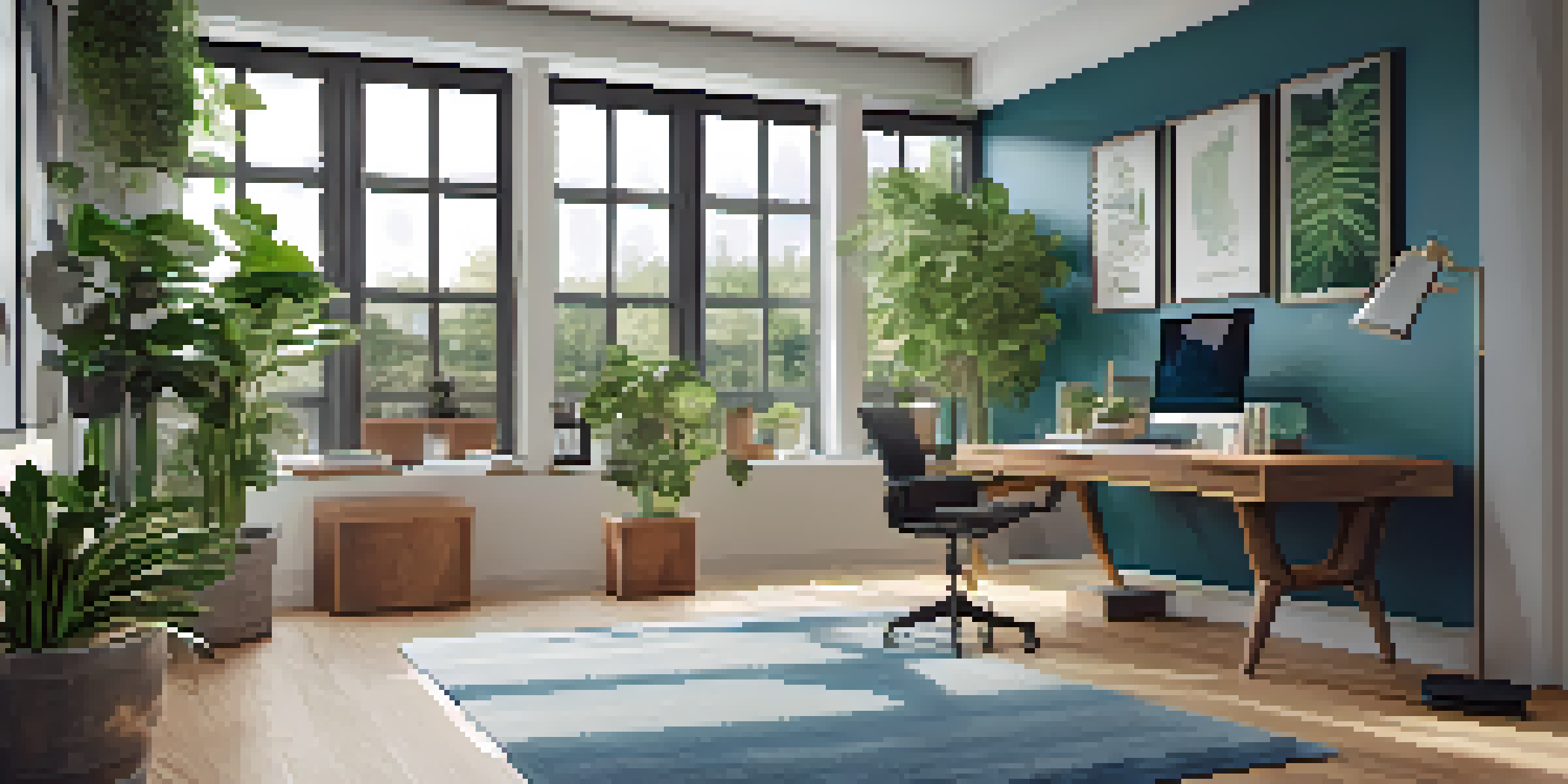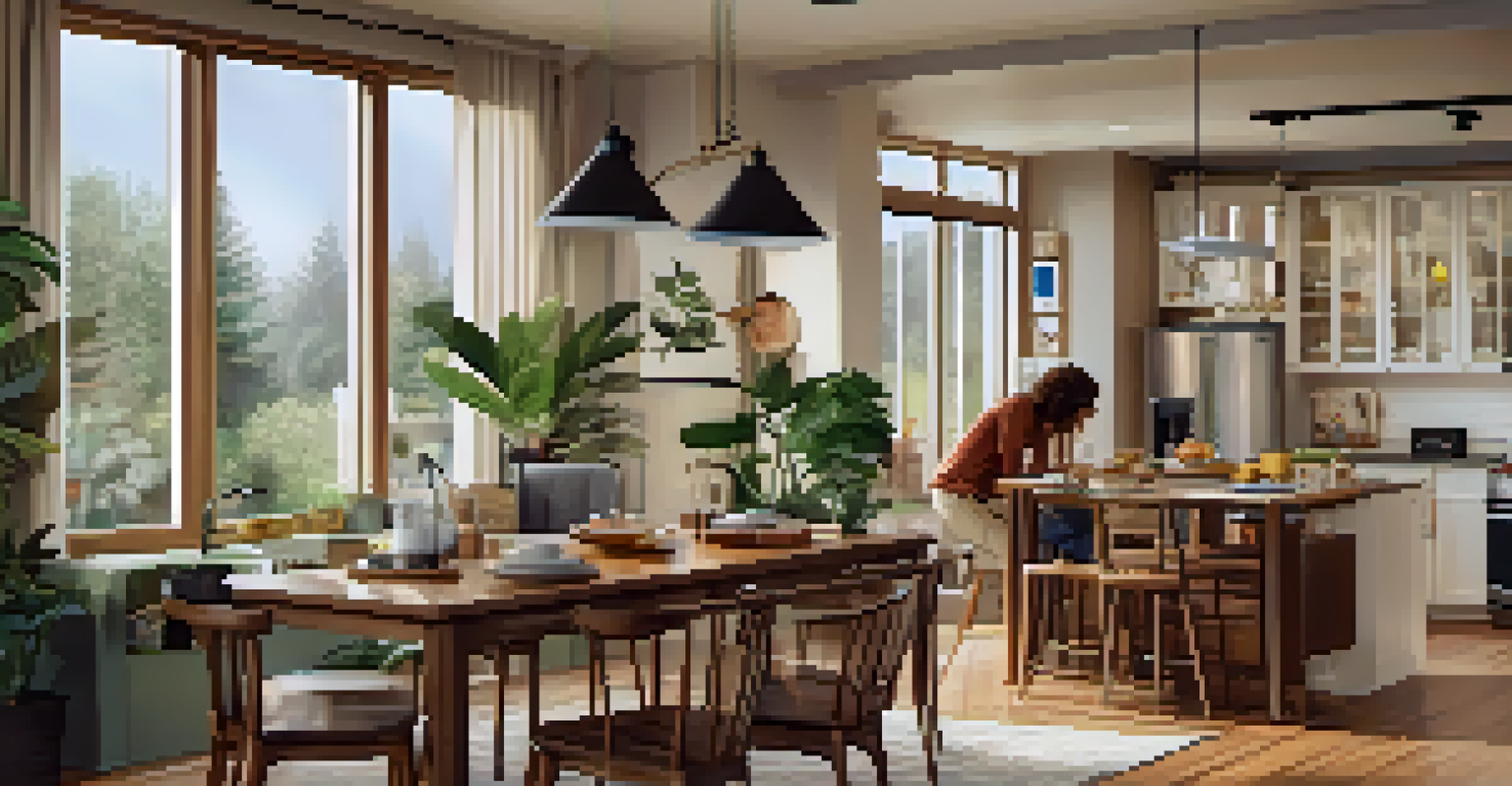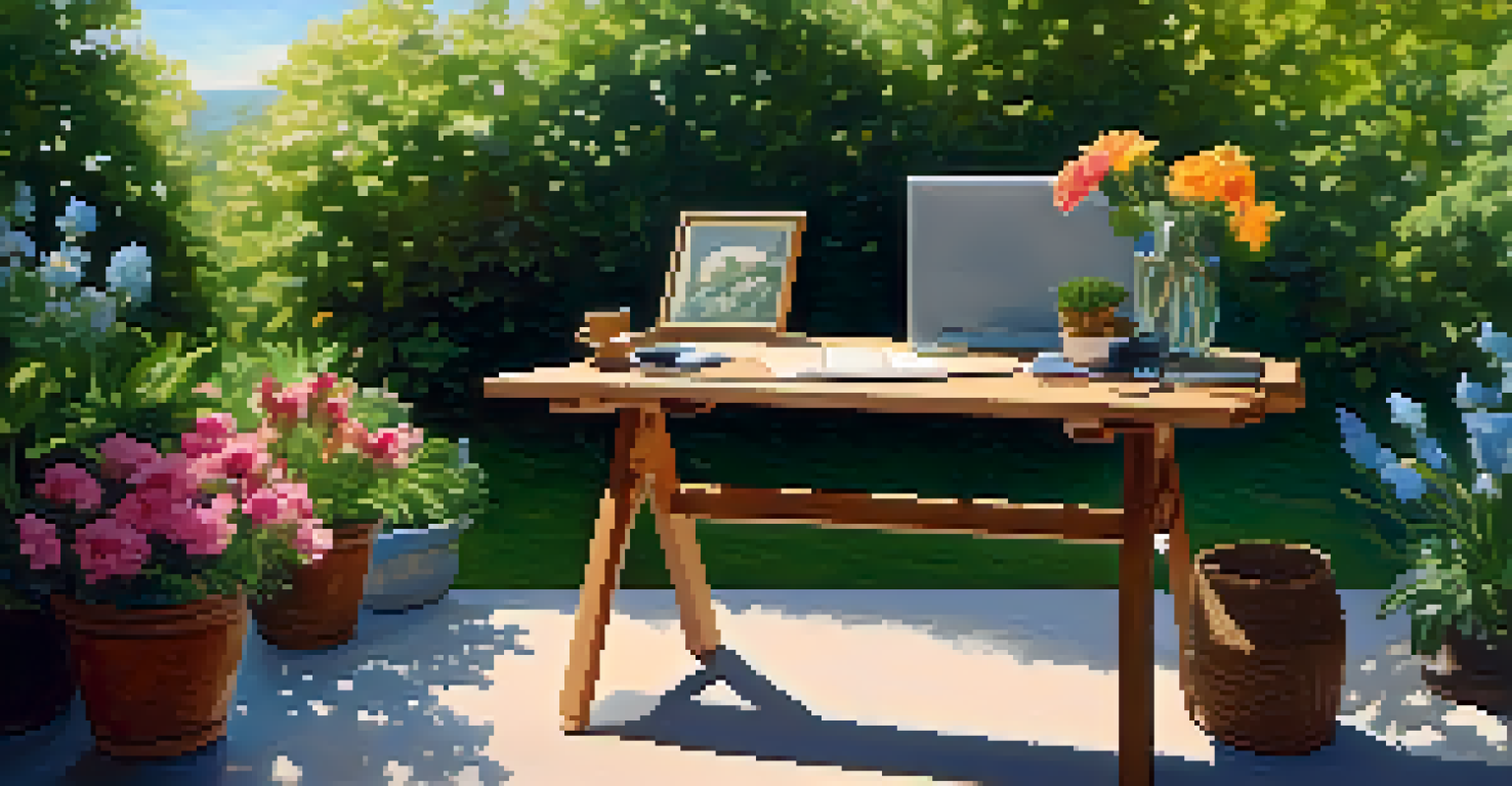Home Design Trends Driven by Remote Work Necessities

The Rise of Functional Home Offices
As remote work becomes the norm, many homeowners are prioritizing a dedicated workspace. This shift has led to the creation of functional home offices that blend style with practicality. No longer just a corner with a laptop, these spaces are designed for productivity, often featuring ergonomic furniture and ample lighting.
The best rooms have something to say about the people who live in them.
Consider how a well-organized desk can enhance focus, while comfortable seating can make long hours more bearable. Accessories like soundproofing panels or plants can add personality while improving the work environment. The aim is to create an office space that feels separate from the rest of home life, helping to maintain a work-life balance.
Additionally, many are opting for multi-functional spaces that can serve as both an office and a leisure area. This flexibility is essential as we navigate an increasingly blended lifestyle, proving that home offices can be both efficient and inviting.
Emphasis on Open and Collaborative Spaces
The pandemic has shifted our perception of home layouts, making open spaces more desirable. Homes are evolving to include areas that encourage collaboration, especially for families with multiple remote workers. Open layouts facilitate communication and connection, creating a welcoming environment for teamwork.

For instance, a combined kitchen and living area allows for casual brainstorming sessions while preparing meals. This design fosters a sense of togetherness, even when everyone is focused on their individual tasks. It's a perfect example of how home design can adapt to our new working realities.
Functional Home Offices Emerge
Homeowners are creating dedicated workspaces that prioritize comfort and productivity, blending style with practicality.
Moreover, these collaborative spaces often incorporate flexible furniture arrangements, such as movable tables and seating. This adaptability means that spaces can easily transition from work mode to relaxation mode, meeting the varied needs of family life.
Incorporating Wellness into Home Design
As the lines between work and home blur, there’s a growing emphasis on wellness in our living spaces. Home design is increasingly reflecting a desire for tranquility and mental well-being. This trend includes features like home gyms, meditation nooks, and designated areas for relaxation.
Design is not just what it looks like and feels like. Design is how it works.
Natural light plays a crucial role here, with many designs incorporating large windows or skylights to boost mood and productivity. The use of calming colors and natural materials further enhances the serene atmosphere. By prioritizing these elements, homeowners can create spaces that promote health and happiness.
Additionally, integrating outdoor spaces into home designs has gained popularity. Balconies, patios, or gardens provide an essential escape, allowing individuals to recharge and find balance amidst their busy schedules.
Smart Home Technology for Efficiency
The integration of smart technology into home design has surged as remote work continues to thrive. Homeowners are investing in devices that enhance productivity and streamline daily tasks. From smart thermostats to voice-activated assistants, these technologies make life more convenient and efficient.
For example, automated lighting can adjust throughout the day, ensuring optimal working conditions and energy savings. Home security systems that can be monitored remotely provide peace of mind while working from home. These innovations not only elevate the functionality of a space but also contribute to a more comfortable living experience.
Wellness in Home Design
Design trends are increasingly focusing on wellness, incorporating natural light and relaxation areas to enhance mental well-being.
Moreover, as remote work persists, many are looking for energy-efficient solutions to reduce utility costs. Smart appliances that manage energy consumption can be a game-changer in maintaining a sustainable home environment.
Personalized Spaces Reflecting Individual Style
With more time spent at home, there's a growing trend towards personalized design that reflects individual tastes and lifestyles. Homeowners are embracing unique decor elements that tell their story, from art pieces to custom furniture. This personalization fosters a sense of belonging and comfort in their workspaces.
For instance, incorporating family heirlooms or travel souvenirs can create a warm atmosphere that inspires creativity. Home offices adorned with personal touches can transform a mundane workspace into a motivating environment. It's all about making the space feel uniquely yours.
Additionally, customization isn't limited to decor; it extends to functional aspects, such as adjustable desks or tailored storage solutions. This focus on individuality ensures that spaces are not only beautiful but also practical for each person’s specific needs.
Sustainable Design Choices for the Eco-Conscious
As remote work becomes a long-term reality, sustainability is increasingly influencing home design. Many homeowners are seeking eco-friendly materials and energy-efficient designs that reduce their carbon footprint. This trend reflects a broader shift towards responsible living, even in our personal spaces.
Sustainable choices might include reclaimed wood for flooring, energy-efficient appliances, or even solar panels. These elements not only contribute to a greener planet but often lead to long-term cost savings. It's a win-win for both the environment and the wallet.
Emphasis on Sustainable Choices
The shift towards remote work is driving homeowners to adopt eco-friendly materials and designs that minimize their carbon footprint.
Moreover, incorporating biophilic design—where nature is integrated into the home—has gained traction. Think living walls, indoor gardens, or large windows showcasing outdoor views. Such designs enhance well-being while fostering a deeper connection to the environment.
Creative Use of Outdoor Spaces
The pandemic has sparked a renewed appreciation for outdoor spaces, prompting homeowners to rethink how they utilize their backyards and patios. Outdoor areas are being transformed into extensions of the home, complete with workspaces, relaxation zones, and even outdoor gyms. This shift allows for a change of scenery, which can be refreshing during long workdays.
Imagine setting up a cozy outdoor office surrounded by greenery or enjoying a yoga session in the fresh air. These creative uses of outdoor spaces not only enhance well-being but also promote a healthy work-life balance. It’s all about finding joy in our surroundings, wherever that may be.

Additionally, outdoor dining areas have become increasingly popular, providing a perfect spot for meetings or family meals. As we adapt to new ways of living and working, these spaces serve as vital retreats that enhance our overall quality of life.